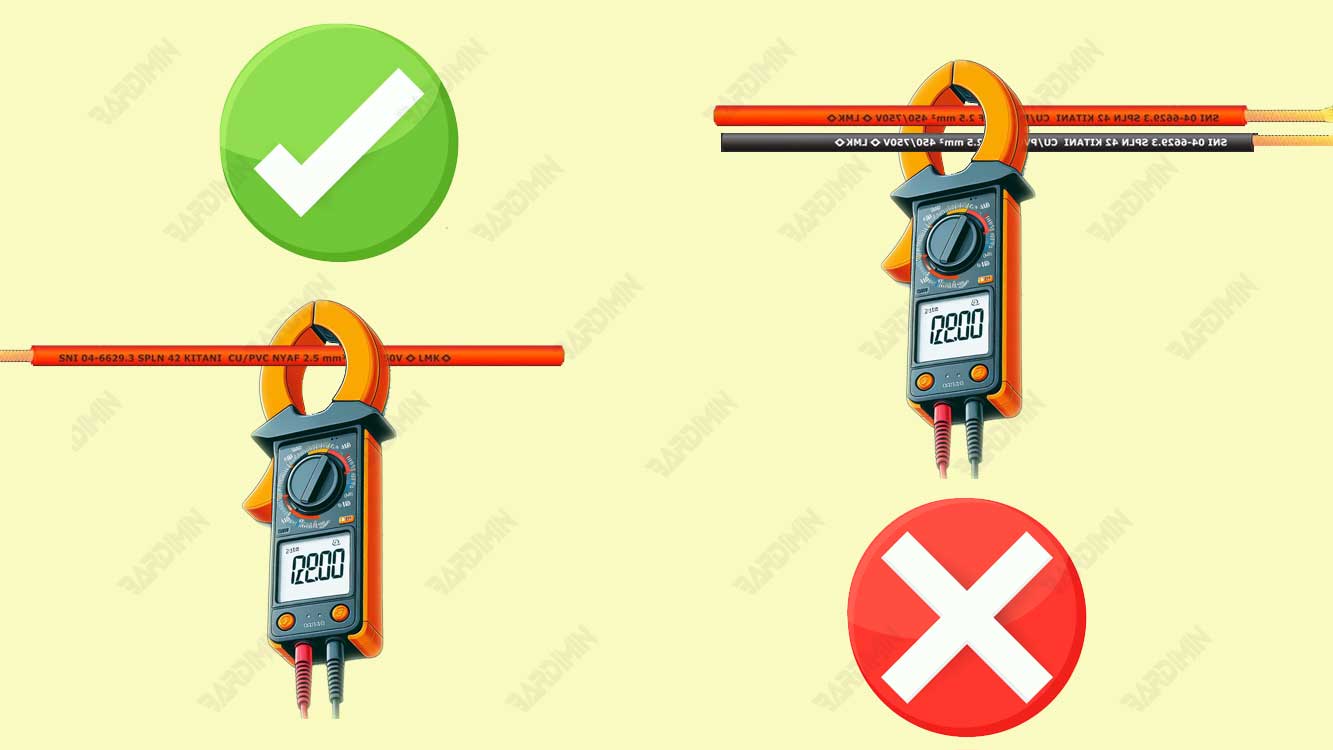How to Use a Clamp Meter to Measure Electric Current
To use a clamp meter to measure electric current, you need to perform the following steps:
1. Select the clamp meter that matches the type, range, and resolution of the electric current you want to measure.
Make sure you use a clamp meter that can measure AC or DC electric current according to the power source you use. If you are not sure, you can use an AC/DC clamp meter that can measure both types of electric current.
In addition, make sure you use a clamp meter that has a sufficient measurement range for the electric current you want to measure. If the measured electric current exceeds the measurement range of the clamp meter, you may damage the clamp meter or even cause an electrical accident. Conversely, if the measured electric current is too small compared to the measurement range of the clamp meter, you will get inaccurate or unstable measurement results. Therefore, you must adjust the measurement range of the clamp meter to the electric current you want to measure.
Usually, clamp meters have several measurement ranges that can be selected using a button or switch. You can choose the measurement range closest to the electric current you want to measure or use the auto range feature if your clamp meter has that feature.
In addition to the measurement range, you should also pay attention to the measurement resolution of the clamp meter, which is the smallest value that the clamp meter can display. The measurement resolution of a clamp meter is usually determined by the number of digits that the clamp meter can display. The more digits that can be displayed, the higher the measurement resolution of the clamp meter.
High-resolution clamp meter measurement will provide more accurate and detailed measurement results, but also take longer to stabilize. A low clamp meter measurement resolution will provide faster and more stable measurement results, but also less accuracy and detail. Therefore, you should adjust the measurement resolution of the clamp meter to your needs and conditions.
2. Turn on the clamp meter and set the measurement mode to AC or DC electric current according to the power source you use.
Make sure you select the correct measurement mode because if you choose the wrong one, you will get incorrect or no measurement results at all. Usually, clamp meters have the symbol ~ for AC electric current and the = symbol for DC electric current.
You can select the measurement mode by using the button or switch on the clamp meter. If your clamp meter has an auto-detect feature, you do not need to select a measurement mode, because the clamp meter will automatically detect the type of electric current you want to measure.
3. Open the jaw clamp meter and place the jaw around the cable or conductor you want to measure the current.
“Make sure you flank only one cable or conductor, because if you flank more than one, you will get incorrect measurement results”.

If you want to measure electric current in a parallel circuit, you must flank the wires or conductors connected to the load for which you want to measure the current. If you want to measure the electric current in a series circuit, you can flank which cables or conductors are in the circuit.
Make sure you flank the cable or conductor with the correct jaw clamp meter because if you are wrong, you will get a measurement result that is opposite to the direction of the electric current. Usually, clamp meters have arrows or dots on their jaws that indicate the direction of positive electric current. You must direct the sign in the direction of the electric current.
If there is no such marking, you can refer to the color of the jaw clamp meter. Usually, a red jaw indicates a positive direction of electric current, while a black jaw indicates a negative direction of electric current. Close the jaw of the clamp meter tightly and make sure there is no gap or distance between the jaw and the cable or conductor.

